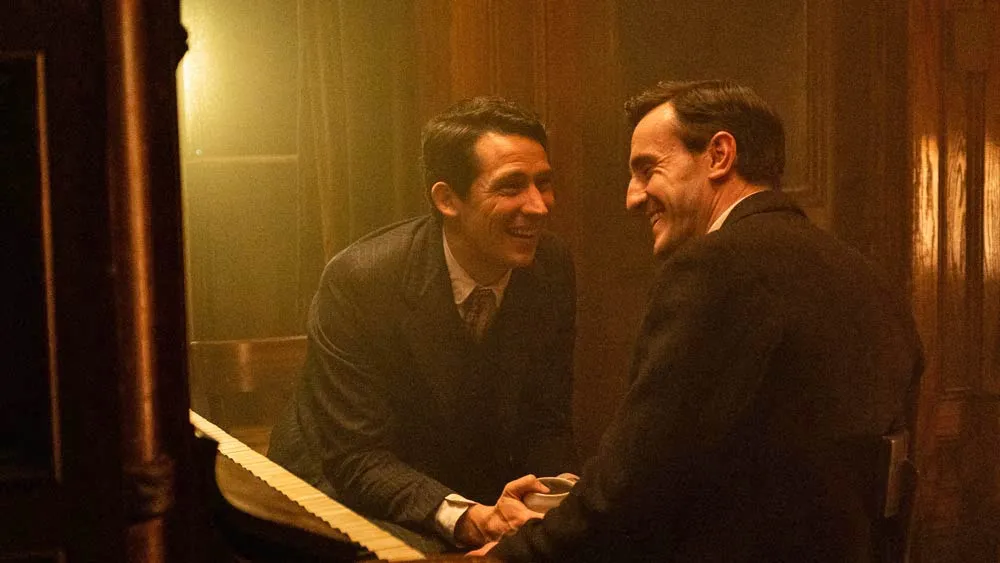May 24, 2015
California LGBT History Project Launches
Kilian Melloy READ TIME: 5 MIN.
A project has been launched in California to focus on the state's LGBT history as work advances on a National Historic Landmark LGBTQ Theme Study and proposed framework for the National Park Service.
Called California Pride: Mapping LGBTQ Histories, the online, crowdsourced archive will feature, according to organizers, the "memories, stories, and images related to sites throughout the Golden State associated with lesbian, gay, bisexual, transgender, and queer experience."
A series of statewide meetings, called pinning parties, is being held to collect information on sites across the state that are of special significance to the LGBT community. The launch event will take place in San Francisco Wednesday, June 10 and will focus on the Bay Area's lesbian history.
Attendees will learn how to "pin" their favorite LGBTQ historic sites to the web-based California Pride map. The National Trust for Historic Preservation and the California Preservation Foundation are supporting the project.
It is similar to the interactive online map of U.S. LGBT historic sites created as part of the National Park Service's ongoing LGBTQ Heritage Initiative. The map, which can be accessed at http://tinyurl.com/l5mz3pg, now includes more than 650 sites in 48 states.
As the Bay Area Reporter first noted in a January 2014 story, the national effort is aimed at having more LGBT sites listed on the National Register of Historic Places, be designated as a National Historic Landmark, or both. To date only five properties in the country have been granted some form of federal historic preservation recognition specifically due to their relationship to LGBT history.
The documentation for properties already listed on the national register or that have landmark status are being reviewed to see if their connections to LGBT history can be added. It is one piece of the National Park Service's initiative to highlight LGBT history throughout the hundreds of properties, national monuments, conservation areas, and park sites that are under its jurisdiction.
Megan Springate, who is overseeing the creation of the National Historic Landmark LGBTQ Theme Study and proposed framework, was in San Francisco in early April to update local advocates of preserving LGBT history about the project. She is racing to complete the more than 600-page-long document by June 2016, months ahead of the presidential election that November, which could marshal in a less gay-friendly administration in early 2017.
"We want it done and released before the administration changes in D.C.," said Springate, who identifies as queer and is seeking a Ph.D. in archaeology at the University of Maryland.
Theme Study
The theme study, largely funded by a $25 million grant from the Gill Foundation, has been broken into 32 chapters written by various authors from across the country. As of last month 22 people had signed contracts to write one of the sections. The topic headings run the gamut from "health," "military," "art and artists" to "spirituality and religion," "leisure and sport," and "sex, love and relationships."
Demographic groups receiving their own chapters include two-spirit, Latino/a, African American, Asian American, Pacific Islander, and transgender people. Each chapter will be capped at 20 pages.
"A lot of history written for the LGBTQ community tends to focus on white, middle class history," said Springate. "All of the writers need to recognize the breadth of diversity under the LGBTQ umbrella."
Some have questioned the absence of a dedicated chapter about bisexuals, but Springate said the authors of all chapters have been instructed about "bisexual erasure and how not to do it."
Elaine Jackson-Retondo, Ph.D., a San Francisco-based history program manager for the National Park Service's Cultural Resources Pacific West Region, said historic context statements often leave out specific groups due to space constraints. The documents, she noted, can be revised in the future.
"We know it doesn't always satisfy everybody," said Jackson-Retondo. "The studies are not the end all, be all. They can be amended."
New York City, San Francisco, Chicago, Miami, and Reno will each have their own chapters. One will be titled "rural," and many cities will be mentioned throughout the document, said Springate.
"We wanted to represent different regions of the country. When you talk about LGBT history, a lot of people think of New York City and San Francisco. But our history is all over the place," said Springate, who chose Reno to represent the Southwest. "These regional histories are different from each other. And people are often left out in rural places."
The San Francisco chapter is being co-written by Donna Graves and Shayne Watson, the authors of a citywide LGBTQ historic context statement now under review by San Francisco planning and historic preservation staff.
Several other authors have Bay Area ties. Sonoma State University history professor Steve Estes, Ph.D., is writing the military chapter, while Stanford University historian and archivist Drew Bourn, Ph.D., is covering spirituality and religion.
Will Roscoe, Ph.D., a San Francisco-based community organizer, is writing the two-spirit chapter, while a former resident of the city, Susan Stryker, Ph.D., is authoring the transgender section. Stryker is a professor of gender and women's studies at the University of Arizona and director of the Institute for LGBT Studies.
Bill Lipsky, a gay man and author of the 2006 book "Gay and Lesbian San Francisco," attended the April 13 meeting, and afterward, told the B.A.R. "the project is excellent and very much needed."
Visitors to the country's historical sites and monuments need to be informed about their connections to LGBT history, added Lipsky.
"Because our gender identification and sexual orientation imbue us with everything we are, it needs to be part of the narrative told to people visiting businesses, homes, and places of importance," he said.
Gay former Hayward City Councilman Kevin Dowling, who also was at the meeting, said chronicling LGBT history is particularly important as gay neighborhoods in cities throughout California, and across the country, are fading away as longtime establishments such as gay bars and bookstores close.
"I think the gay community is under assault. The gayborhoods across the country are shrinking and changing rapidly, especially the bars really. In Hayward we have lost four of our five bars," noted Dowling, who is active with the Hayward Historical Society and a supporter of the San Francisco-based GLBT Historical Society. "It is important to honor where we have come from and the pioneers in civil rights, the people starting businesses, and politicians."
The first California Pride: Mapping LGBTQ Histories pinning party will be held from 6 to 7:30 p.m. Wednesday, June 10 at the California Historical Society, 678 Mission Street in San Francisco. To RSVP, go to http://capridepinningparty.eventbrite.com.
For more information about California Pride, visit http://www.historypin.org/project/469-california-pride
For more information about the National Park Service LGBT initiative, visit http://www.nps.gov/history/heritageinitiatives/LGBThistory
Kilian Melloy serves as EDGE Media Network's Associate Arts Editor and Staff Contributor. His professional memberships include the National Lesbian & Gay Journalists Association, the Boston Online Film Critics Association, The Gay and Lesbian Entertainment Critics Association, and the Boston Theater Critics Association's Elliot Norton Awards Committee.


